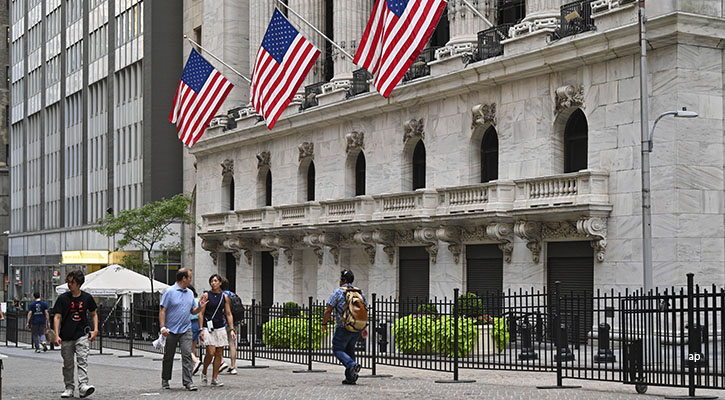For the latest ETF industry news, please refer to our “Asia ETF Roundup (Industry) – October2019”.
Major Markets Performance
Global geopolitical tensions seemed to be easing a bit as the U.S. and China draw nearer a phase-one agreement on trade talks and the EU agreed to push back Brexit to 31 January 2020. The U.K is on course to hold a general election on 12 December. The S&P 500 notched fresh new highs, rising 2%. Meanwhile, the U.K.’s FTSE 100 dropped 2.2%. China’s equity markets were up (HSCEI +3.3%; CSI 300 +1.9%; Shanghai Composite +0.8%). Emerging markets’ performance was generally positive in October (as measured by their respective MSCI indices in U.S. dollar terms).
The U.S. dollar depreciated in October, dropping 2.0% (as measured by the ICE Spot Index). Central banks around the world continue to cut rates. Asian currencies generally appreciated against the greenback. The Chinese Yuan rose 1.5% against the U.S. dollar, narrowing its year-to-date depreciation against the U.S. dollar to 2.4%.
Precious metals’ prices had a positive month in October. Gold, silver and platinum prices rose 2%-5%.
.png)
Economic and Market News
U.S., Australia, India, South Korea, Indonesia, Turkey, Russia and Hong Kong Cut Rates
- U.S. Cuts Rates by 25bps –On 30 October 2019,the U.S. Federal Reserve announced it would cut the target range for the federal funds rate by 25bps to 1.50% to 1.75%. Federal Reserve Chairman Powell stated, “we took this step to keep the U.S. Economy strong in the face of global developments and to provide some insurance against ongoing risks” and “see the current stance of monetary policy as likely to remain appropriate”. This is the third time the Federal Reserve has cut its target range this year, each time by 25bps.
- Australia Cuts Rates by 25bps –The Reserve Bank of Australia decided on 1 October 2019 to cut its cash rate by 25bps to 0.75%. This is the third time the Bank has cut its cash rate this year, each time by 25bps.
- India Cuts Rates by 25bps – The Reserve Bank of India decided on 4 October 2019 to cut its policy repo rate by 25bps to 5.15%. This is the fifth time the Bank cut interest rates this year. The Bank has cumulatively cut interest rates by 135bps this year.
- South Korea Cuts Rates by 25bps – The Bank of Korea decided on16 October 2019 to cut its base rate by 25bps to 1.25%. The Bank last cut rates by 25bps in July 2019.
- Indonesia Cuts Rates by 25 bps – Bank Indonesia decided on 24 October 2019 to cut BI 7-day (reverse) repo rate by 25bps to 5.00%. This is the fourth consecutive month that the Bank cut its reverse repo rate.
- Turkey Cuts Rates by 250bps – The Central Bank of the Republic of Turkey decided on 24 October 2019 to cut its policy rate by 250bps to 14.00%. This is the third time the Bank has cut its policy rate this year. The bank has reduced rates by a total of 1000bps since July 2019.
- Russia Cuts Rates by 50bps – The Central Bank of the Russian Federation decided on 25 October 2019 to cut its key rate by 50bps to 6.50%. This is the fourth time the Bank cut its key rate this year.
- Hong Kong Cuts Rates by 25bps –The Hong Kong Monetary Authority decided on 31 October 2019 to cut its base rate by 25bps to 2.00%, following the U.S. rate cut. This is the third time the Monetary Authority cut its base rates this year.
IMF Updates Forecast for Asian Economies, Highlights Slowing Growth
On 22 October 2019, the International Monetary Fund (IMF) updated its regional economic outlook on Asia Pacific economies in the report “Regional Economic Outlook: Asia Pacific”. The IMF forecasts real GDP growth across Asia of 5.0% and 5.1% in 2019 and 2020, respectively. This is 0.4 and 0.3 percentage points lower than the 2019 and 2020 projections made in April, respectively. The report cited a marked deceleration in merchandise trade and investments and an uncertain policy environment as reasons behind its more muted projections. The IMF’s latest growth forecasts for the Asian countries included in its estimates are as follows:
- China: IMF expects a growth of 6.1% and 5.8% in 2019 and 2020, respectively, reflecting the ongoing rebalancing of growth drivers and impact of the U.S.-China trade war.
- India: IMF expects a growth of 6.1% in 2019 and strengthening to 7.0% 2020, supported by recent monetary stimulus and the reduction in corporate income tax.
- Japan: IMF projects a moderate pace of expansion at 0.9% in 2019 and 0.5% in 2020, dragged by the recent hike in consumption tax.
- ASEAN-5 countries (Indonesia, Malaysia, Philippines, Singapore and Thailand): IMF expects a growth of 4.3% and 4.5% in 2019 and 2020, respectively, marked by the weakening external demand.
China Economic Data: Inflation rose to 3.0% in September; Caixin/Markit PMI rose to 51.7, Official PMI dropped to 49.3 in October
- China’s inflation rate rose to 3.0% in September, up from August’s reading of 2.8%. Pork prices jumped 69% in September from a year ago.
- China’s Caixin/Markit PMI rose further to 51.7 in October, this is compared to September’s reading of 51.4. The official PMI, however, dropped to 49.3 in October, down from September’s reading of 49.8.

















